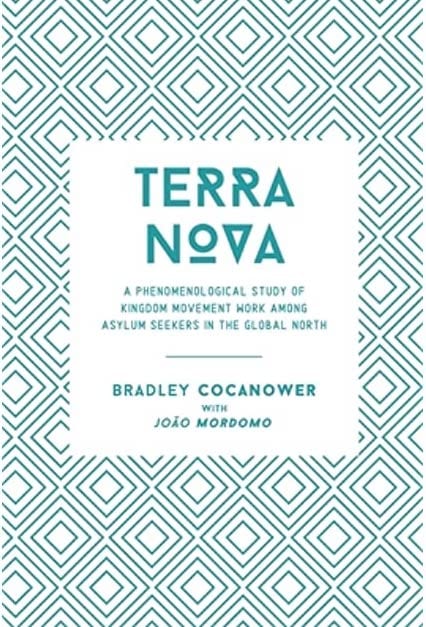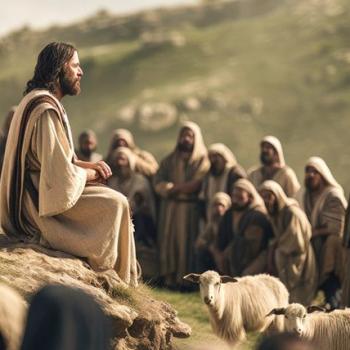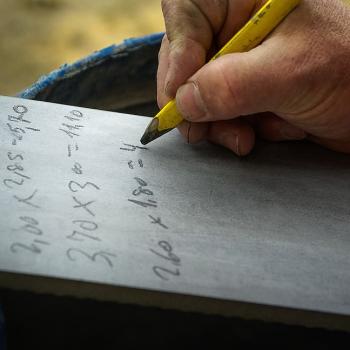Today’s guest post is written by Bradley Cocanower (pseudonym), who has cowritten Terranova: A Phenomenological Study of Kingdom Movement Work among Asylum Seekers in the Global North (along with João Mordomo).
Bradley has served in a variety of cross-cultural roles over the past 10 years in Europe and Central America. Currently, Bradley lives in Southern Europe with his wife and two children helping to train and equip Spanish speakers who are preparing for pioneer ministry in the majority world.
 While much of the world is closed to missionaries, Europe has opened a door for ministering to people from around the world.
While much of the world is closed to missionaries, Europe has opened a door for ministering to people from around the world.
“Europe’s refugee crisis has created a historically unprecedented window of opportunity for sharing the saving message of the gospel with some of the least-reached people on earth ― a segment of the world’s population that would otherwise be in ‘closed’ or ‘restricted access’ countries hostile to the gospel and Christian mission.”[1]
The question we should ask is this: “How can Christians leverage this window of opportunity for God’s glory and the establishment of his Kingdom both in Europe and beyond?”
Debating Kingdom Movements
Kingdom Movements (which is a broad term that would include methodologies such as Church Planting Movements (CPM), Disciple Making Movements (DMM), and other multiplicative approaches to ministry) seem to be a compelling option in terms of methodology and strategy.
Notably, research reveals surprisingly that few movements are successfully being started in the Global North.[2] Terranova analyzes a Kingdom Movement among asylum seekers in Southern Italy. Its purpose is to help leaders and practitioners
- consider the value of the methodology in the midst of unprecedented opportunity,
- recognize the challenges and obstacles that practitioners have faced in that context.
Key missiologists on both sides of the arguments (for and against Movements) were involved in the study. For this reason, readers may find the categorization and analysis of critiques of Kingdom Movements valuable. The critical evaluation and the examination of critiques of movements provide thoughtful insights for missiologists around the world, particularly those engaged in Kingdom Movement work or spiritual engagement with refugees.
One key finding of Terranova is that scholarly research of Kingdom Movements is very much in its infancy. Therefore, Terranova can be a valuable resource in that it highlights the disparity between the popularity of movements and limited scholarly research in order to catalyze future studies in the field.
What’s in the book?
Here is the layout of the book.
Chapter 1 explains the need for the study, methodology, and key terms, such as “Kingdom Movements” and “asylum seekers.” Both terms are important to the research since they are frequently used interchangeably with other similar but not synonymous words that can impact the understanding of the study. The book explains, for example, how irregular migrants often mix with refugees in applying for asylum in the global north.
Chapter 2 reviews a variety of mainstream and academic resources focusing on Kingdom Movements, diaspora missions, and intercultural discipleship.
Chapter 3 describes the debate taking place in modern missiology around various dynamics of Kingdom Movements. Ultimately, it highlights some of the strengths and weaknesses of the methodology. This is a valuable chapter for individuals interested in or involved with movements because it demonstrates that such critiques can be used to sharpen the methodology.
Chapter 4 describes the context of the refugee crisis in Sicily, Italy, where research is being carried out. The chapter includes sections on the motivating factors for migration, what the journey is like for most refugees, what awaits migrants in Sicily, and the impact that this refugee crisis has on the region.
Chapter 5 highlights insights and stories from a group of practitioners that help to show firsthand what their experience has been.
Chapter 6 analyzes the data, draws conclusions, and makes recommendations. This chapter also provides thoughtful analysis that may be helpful for a variety of individuals and organizations who want to better understand Kingdom Movements or the nuances of working with asylum seekers and refugees particularly in the Global North.
Terranova concludes that Kingdom Movement methodologies have many characteristics that are both advisable and proven in leading to multiplying disciples. However, it also recognizes that there is much validity to the critiques that have been raised by both practitioners and missiologists.
This book may encourage those interested in or involved in Kingdom Movements to evaluate their expectations or ways in which their work can produce healthier and more sustainable results in a variety of contexts around the world.
[1] Daniel Zeidan, “Ministry to Refugees Arriving in Europe,” in Refugee Diaspora (Pasadena, CA: William Carey Publishing, 2018), 89.
[2] Jerry Trousdale and Glenn Sunshine reported in 2018 that there were “…651 total movements being tracked in scores of countries, but only 8 are in North America, Western Europe, or Oceania.” Jerry Trousdale and Glenn Sunshine, The Kingdom Unleashed (Murfreesboro, TN: DMM Library, 2018), 34. Though statistics on movements are outdated, the trends of movements happening primarily in the Global South have reportedly stayed the same.












